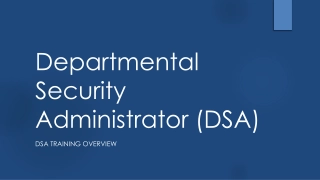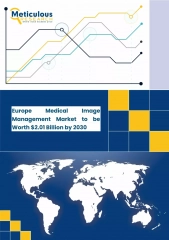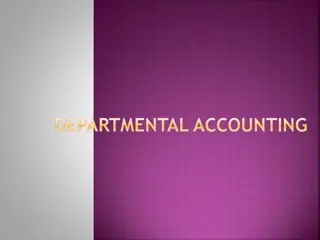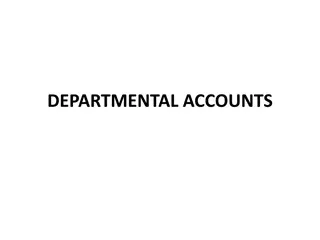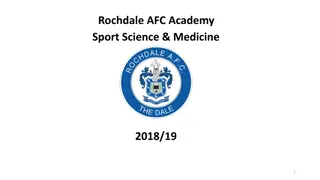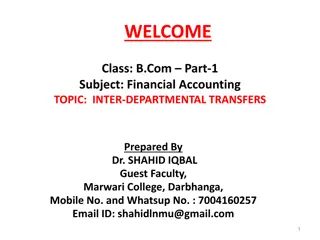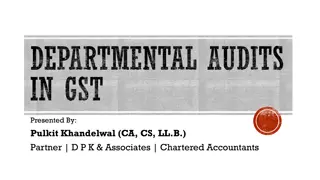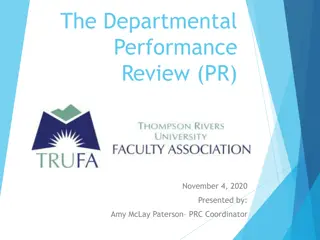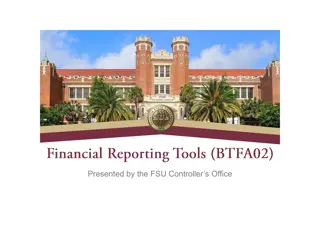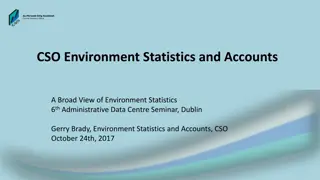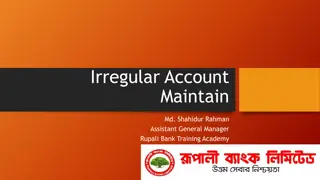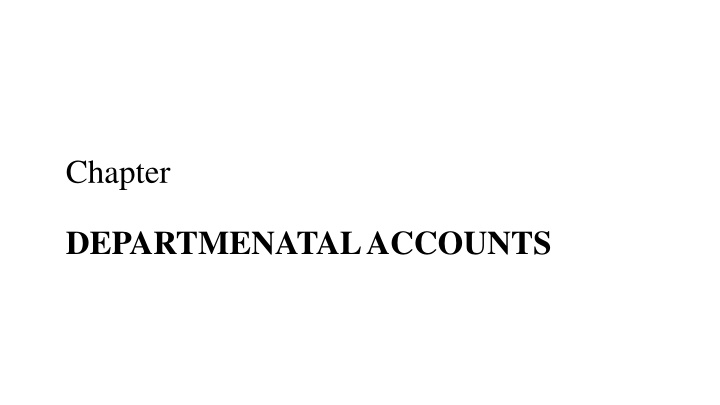
Departmental Accounts for Business Management
"Learn about departmental accounts, the difference between departments and branches, methods of managing departmental accounts, allocating expenses, and handling inter-departmental transfers in business. Enhance your knowledge of practical accounting practices." (285 characters)
Download Presentation

Please find below an Image/Link to download the presentation.
The content on the website is provided AS IS for your information and personal use only. It may not be sold, licensed, or shared on other websites without obtaining consent from the author. If you encounter any issues during the download, it is possible that the publisher has removed the file from their server.
You are allowed to download the files provided on this website for personal or commercial use, subject to the condition that they are used lawfully. All files are the property of their respective owners.
The content on the website is provided AS IS for your information and personal use only. It may not be sold, licensed, or shared on other websites without obtaining consent from the author.
E N D
Presentation Transcript
Chapter DEPARTMENATAL ACCOUNTS
What is Department? A section of an enterprise A physical part of the rest of the business. A profit center Not geographical separated from the rest of the business
Difference between Department and Branch In department case books of accounts are maintain by the HO while independent branch maintains its own record. Branch is geographical separated while department is not. In case of departmental accounts the problem of common expense allocation arises. In branch case, at the year reconciliation and adjustments are required. Foreign branch figures can create some problems.
Methods of Departmental Accounts Separate set of books are maintained for each department. This method is expensive and time consuming. Used where law required to maintain separate set of books for each. At the year end results are consolidated. Columnar form is used Kept by the central accounts department Easy and economical. Columnar purchase and sales day book is used for each department Note: Now-a-days this computer files are used. Dr. Cr. Particulers Dept.A Dept.B Dept.C Total Particulers Dept.A Dept.B Dept.C Total
Allocation of Departmental Expenses Exp. directly related to a department should be charged to that dept. Expenses directly related to sales should be apportioned on sales. All other, on some logical base. S No Expenses Bases 1 Selling, after-sales service, discount, bad debts, manager commission, freight outward etc. Sales of each department 2. Rent, rates, local taxes, heating, insuarance of building etc., Area or value of floor space 3. Lightings Lighting points. 4. Insurance on Stock Average Stock 5. Insurance and depreciation on plant and machinery Value of Plant and machinery 6. Canteen expenses, labour welfare or other related exp Number of employees 7. Carriage inwards Purchase of each dept.
Inter-departmental Transfer (1 of 2) If allowed by the HO. Departmental Transfer Analysis sheet is used. Journal Entry is: Receiving Dept Dr. To Supplying Dept Cr. Transfer may be cost-based or invoiced-based In case of invoiced-based transfer, adjustment for load will be required at the year end to find the true picture.
Inter-departmental Transfer (2 of 2) Journal entry at the year end for load consist in closing stock: General Profit and Loss Acc ..Dr. To Prov. for unrealized Profit on Stock Cr. At the beginning of the next year reversed entry will be passed. Prov. for unrealized Profit on Stock Dr. To General Profit and Loss Acc Cr.
Memorandum Stock and Memorandum Markup Account Memorandum Stock and Memorandum Markup Account For an adequate check on stock. Mem. Stock account is maintained at selling/inflated price. Mem. Mark-up account is maintained for loading (selling price minus cost price). Departmental gross profit comes from Mem. Mark-up account. (similar to branch adjustment account of Branch Chapter) . Please read Chapter Departmental Accounts, memorandum stock account section.
Solved many exercises/illustrations of this chapter in class.

